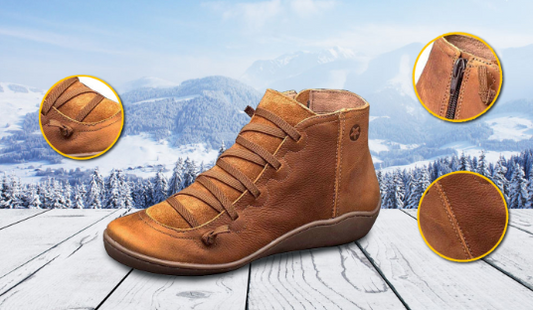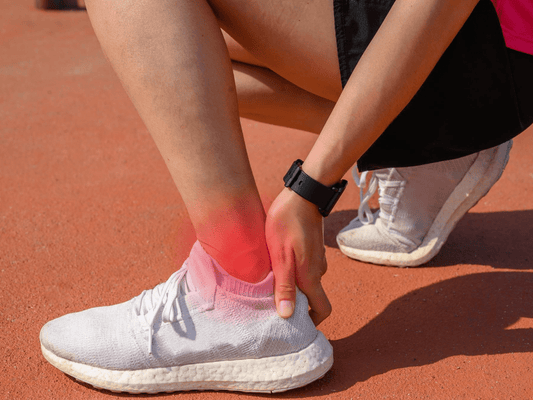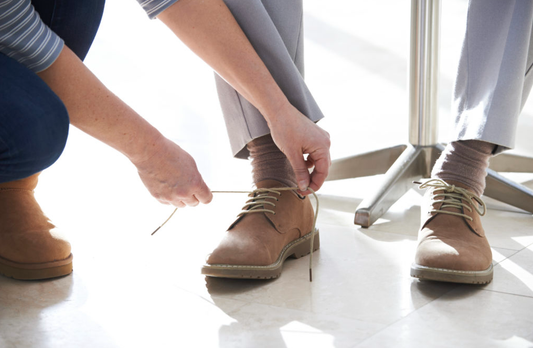Plantar fasciitis is when the bottom part of your foot hurts a lot, especially near the heel. It happens because of a sore part called the plantar fascia. Picking the wrong shoes, ones that don't give enough support or cushion, can make it worse or start it. So, if you're curious about how your choice of shoes can save your feet from this pain, keep reading! We'll make it easy to understand and help you pick the perfect shoes for happy, pain-free feet.
What is Plantar Fasciitis All About

Plantar fasciitis is a foot problem that makes the bottom of your foot, especially the heel, really hurt. It happens when the plantar fascia, a tight band under your foot, gets swollen. Now, let's talk about why it happens. One big factor is wearing shoes that don't support your feet well. If your shoes lack proper arch support or cushioning, it can stress out your foot and lead to plantar fasciitis. Other things like being on your feet a lot or having certain foot shapes can also contribute.
The Connection Between Footwear and Plantar Fasciitis
Shoes play a crucial role in supporting foot structure by providing necessary arch support and cushioning. According to the American Podiatric Medical Association (APMA), well-designed shoes help distribute body weight evenly and reduce stress on the feet, contributing to overall foot health.
Wearing shoes without proper arch support can strain the plantar fascia, leading to inflammation and plantar fasciitis. For example, regularly wearing high heels that don't offer adequate support can alter foot mechanics, causing increased pressure on the plantar fascia.
Finding Out What Shoes Often Cause Plantar Fasciitis
Some common characteristics of shoes that can lead to plantar fasciitis include:
Lack of Arch Support:
Shoes without proper arch support can strain the plantar fascia, contributing to the development or exacerbation of plantar fasciitis.

Inadequate Cushioning:
Insufficient cushioning in shoes may fail to absorb shock effectively, increasing the impact on the feet and potentially causing discomfort in the plantar fascia.
Tight Toe Space:
Shoes with cramped toe space can squeeze the toes, affecting the natural alignment of the foot and potentially contributing to plantar fasciitis.

High Heels:
High-heeled shoes alter the distribution of body weight and place added pressure on the plantar fascia, making them a common factor in plantar fasciitis development.
Poor Arch Design:
Shoes with poorly designed arches or inadequate arch support can strain the plantar fascia, leading to inflammation and heel pain.
What's the Secret to Choosing Healthy Footwear
Choosing the right shoes for foot health involves considering essential factors. Firstly, prioritize shoes that provide optimal arch support, maintaining your foot's natural shape and preventing strain on the arch. For instance, athletic shoes equipped with specialized foam or gel inserts offer excellent arch support, making them ideal for high-impact activities like running or jogging.

Secondly, ensure your shoes offer optimal cushioning for shock absorption. This feature is crucial in reducing the impact on your feet and providing a comfortable walking or running experience. Consider athletic shoes with advanced cushioning technologies, such as air pockets or responsive foam, which effectively absorb shocks during various activities.

Additionally, tailor your choice of footwear based on your individual foot characteristics. If you have flat feet, opt for shoes with added arch support and stability features to compensate for the lower arch. Conversely, individuals with a higher arch may benefit from shoes offering extra cushioning and flexibility. By selecting shoes that match your unique foot characteristics, you enhance comfort, reduce the risk of discomfort, and promote overall foot health.
Preventing Foot Pain: Smart Shoe Choices Matter
Tips for Selecting Suitable Everyday Shoes:
Arch Support:
Look for everyday shoes with good arch support. This helps maintain your foot's natural shape and provides comfort throughout the day.

Cushioning:
Opt for shoes with ample cushioning for daily activities. This ensures shock absorption, reducing strain on your feet during walking or standing.
Proper Sizing:
Ensure a proper fit. Shoes that are too tight or too loose can lead to discomfort and foot issues.
Breathable Materials:
Choose shoes made of breathable materials to keep your feet cool and prevent moisture buildup.

Versatility:
Select versatile styles that match different outfits and occasions, offering both style and comfort.
Advice on Footwear for Specific Activities:
Running:
Choose running shoes tailored to your running style and foot shape. Look for designs with adequate cushioning and support to absorb impact and enhance performance.
Work:
For work, especially if you're on your feet a lot, prioritize comfort and support. Opt for shoes with non-slip soles and consider orthopedic inserts for added support during long hours.
Sports:
Select sports-specific footwear for activities like basketball, tennis, or soccer. These shoes are designed to provide the necessary support, stability, and traction required for each sport.

Casual Walking:
If you enjoy casual walks, go for comfortable walking shoes with good arch support and cushioning. These are designed for regular, low-impact activities.
So, the bottom line - choosing the right shoes is key in preventing plantar fasciitis. The right shoes keep your foot structure in check, easing the strain on that tricky plantar fascia. So, why not make a smart move, pick the proper pair, and give your feet the love they deserve?



